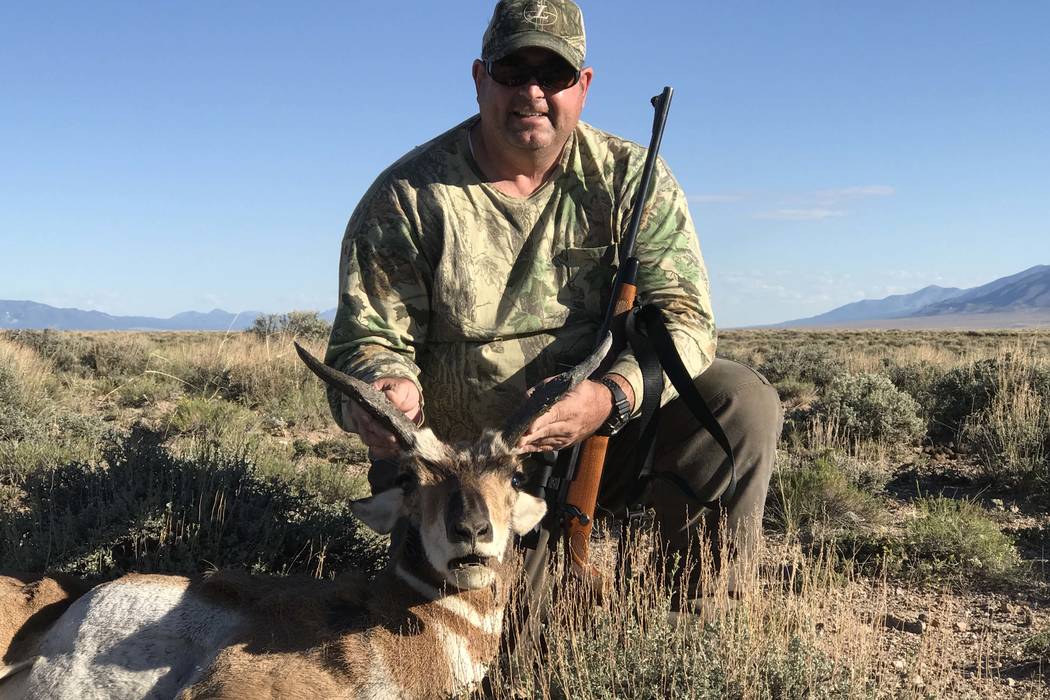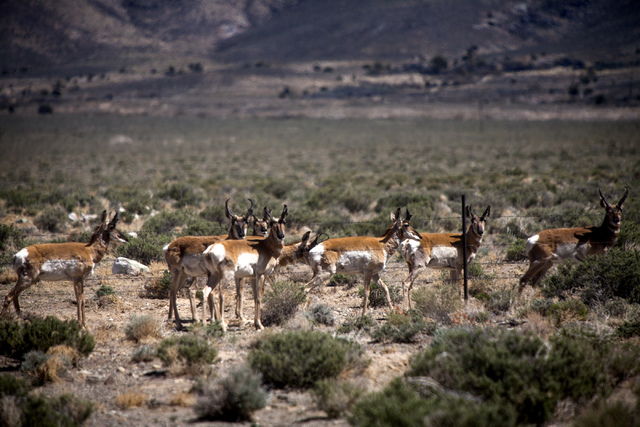Pronghorn antelope brings beauty to summer hunting



One of the great things about spending time in the outdoors is the opportunity it provides to observe first hand some of the unique behaviors animals display at various times of the year. In some ways, it’s like going back to biology class only it’s much more enjoyable.
Just last week, Don Nash and I had the chance to learn about pronghorn antelope while hunting the speedy animals in a remote area near the Utah-Nevada state line.
School started when we drove over Wells Summit and began our descent into Hamlin Valley. It was late afternoon so the sun was at our backs, making it easy to pick out details on the valley floor below us. It didn’t hurt that most of the vegetation was no more than ankle high. Antelope are known for their preference for wide open country where they can use their keen eyesight to spot predators and other threats.
It has been said that an antelope’s vision is equivalent to an 8-power binocular. I’m not sure how one might measure that, but spend some time chasing them and you will come to understand how that comparison came to be. With their eyes located wide and on the sides of their head, not only can they see a great distance but they can do so both in front and behind them. That creates a challenge for hunters as well as natural predators.
We rolled slowly down the hill toward the valley floor while keeping an eye out for reddish-brown and white colored antelope we expected to easily see against the dusty landscape. Half-way down the slope, Don pointed out a buck standing proudly with a small handful of does. I stopped the truck to look but didn’t see them right away.
“Where are you looking?” I asked.
Despite their coloring, or perhaps because of it, antelope have an amazing ability to blend into the desert landscape. The one thing that will give them away quickly is their white rump patch, which flairs up when they are alarmed and can be seen from far away.
The buck Don pointed out had horns that spread out wide before sweeping back toward the center in a pair of pretty arches above matching prongs. Since the sun was already sinking low in the west, we would be back in the morning.
Shortly after sunup, we spotted the buck and his harem of does from our vantage point on the slope above them. Our intent was to out-maneuver them and execute a good stock, but they were having nothing to do with it. The buck was busy in pre-rut behavior and spent considerable energy gathering wayward does. Back and forth they went before the buck eventually chased two of his does into the distance and was gone.
Scenes like this played out for us repeatedly all day. Oftentimes we were still a mile or more away when their rump patches flared and they started running. Pronghorns have been clocked at speeds as fast as 55 miles an hour or more, making them one of the fastest land animals in the world.
Early Saturday morning, we turned down a fence line road that crossed Spring Valley and stopped briefly on a small rise to look over a group of antelope we saw in the distance. Then we dropped through a shallow draw and drove up the next rise. At the top of the hill we turned left. That’s when Don spotted a buck standing only a few yards from where we had stopped moments before. We both wondered aloud where he had come from.
“He’s not very big, and he is goofy looking,” said Don.
Rather than growing vertically, his horns laid out wide and nearly flat. His other-than-typical appearance sold me. And it didn’t hurt that unlike every other antelope we had seen the previous two days, this buck chose to walk slowly in our direction rather than running full speed in the opposite direction.
When he reached the fence, the buck stopped and my bullet found its mark. An adult buck antelope will generally weigh between 90 and 125 pounds. My guess is this one was at the lower end of that spectrum. We boned him right there, put the meat on ice and pointed the truck toward home.
Freelance writer Doug Nielsen is a conservation educator for the Nevada Department of Wildlife. His “In the Outdoors” column, published Thursday, is not affiliated with or endorsed by the NDOW. Any opinions he states in his column are his own. Find him on Facebook at @dougwritesoutdoors. He can be reached at intheoutdoorslv@gmail.com
Upcoming events
• The 2017 mourning dove season starts Friday. The limit is 15 birds.
• The U.S. Fish & Wildlife Service and the Nevada Department of Wildlife will host a waterfowl hunting workshop Sept. 16, 8:30 a.m.-12:30 p.m., at the Clark County Shooting Complex Education Center. Register online at ndowlicensing.com.












